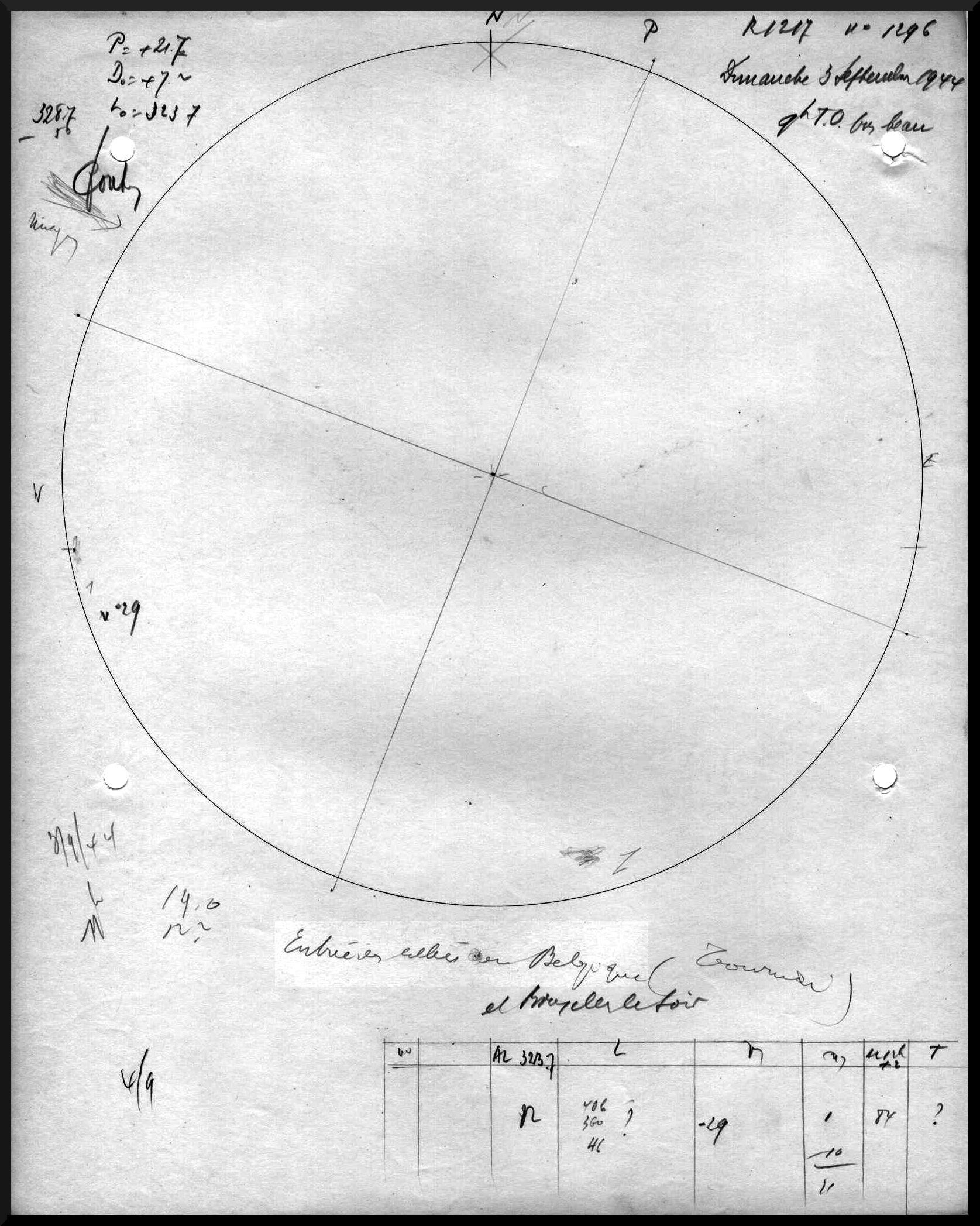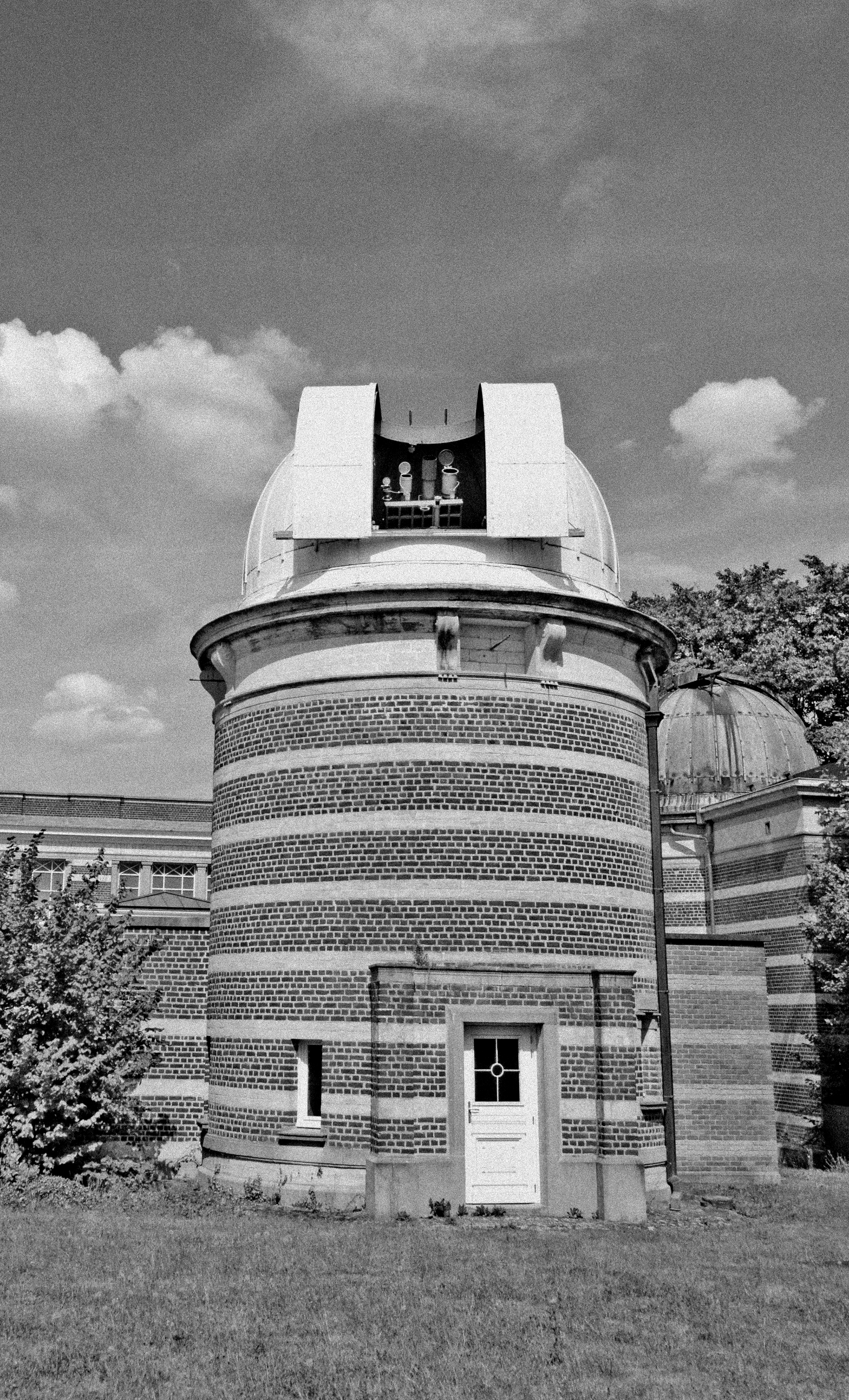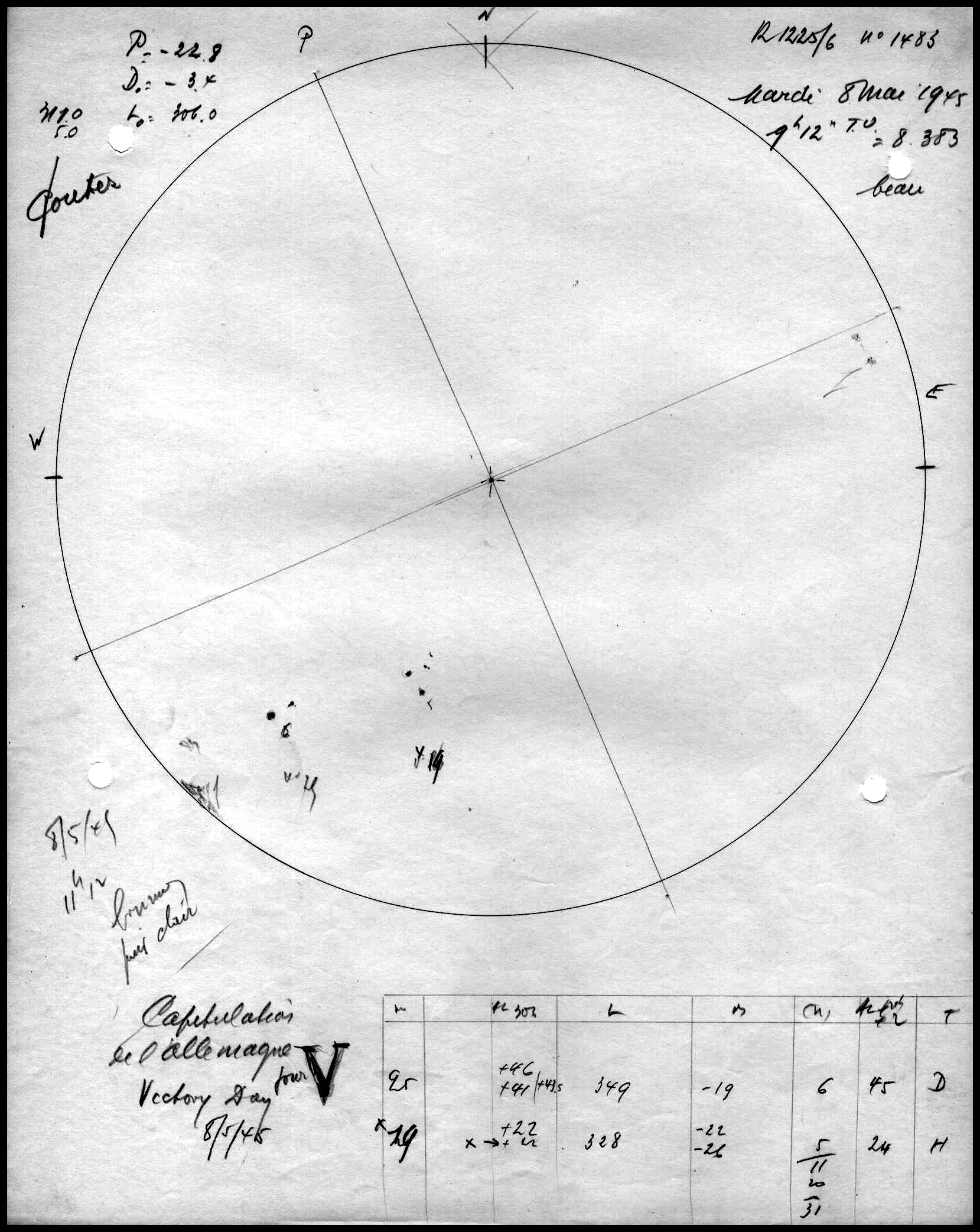At the Royal Observatory of Belgium, scientific activity did not cease during the war. In particular, the daily drawing of sunspots continued since 1940. Sunspots are dark structures on the sun's surface indicating the emergence of magnetic fields. These can be the source of geomagnetic storms, giving rise to the northern lights. Some auroras can even be seen in Belgium, like those observed in May 2024.
Exceptionally, the observer adds a note that is not related to solar activity but to historical events, such as the liberation of Brussels on September 3, 1944, with the comment “entrée des Alliés en Belgique (Tournai) et à Bruxelles le soir” (“Allied entry into Belgium (Tournai) and Brussels in the evening”), or the Allied victory on May 8, 1945, with the note “capitulation de l’Allemagne, V pour Victory Day” (“German capitulation, V for Victory Day”).
A vivid reminder of a tumultuous time when science was trying to survive.
Figures (from left to right): the September 3, 1944 drawing - the solar dome and the USET (Uccle Solar Equatorial Table) instruments used to monitor the sun's activity, particularly sunspots - the May 8, 1945 drawing








